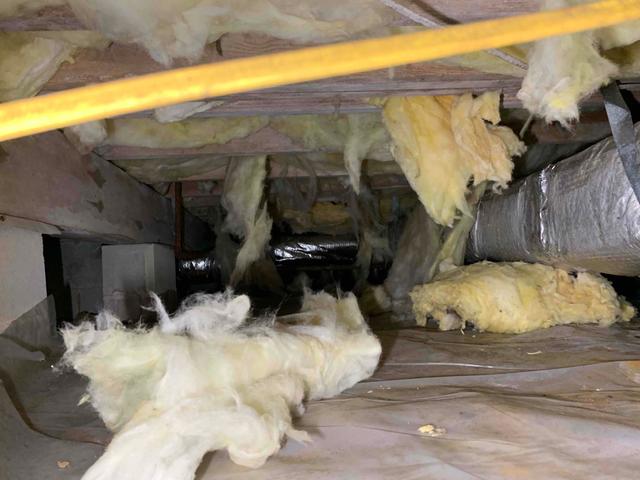
Fiberglass Insulation
The fiberglass in this crawl space has fallen away from the subfloor, leaving the floor uninsulated and exposed. This occurs because in warmer, humid months fiberglass soaks up moisture in the crawl space like a sponge and becomes too heavy to sit between the floor joists. The moisture pulls apart the fibers of the insulation and eventually, it will litter the crawl space floor. This can also lead to cold floors and drafts during the winter months.
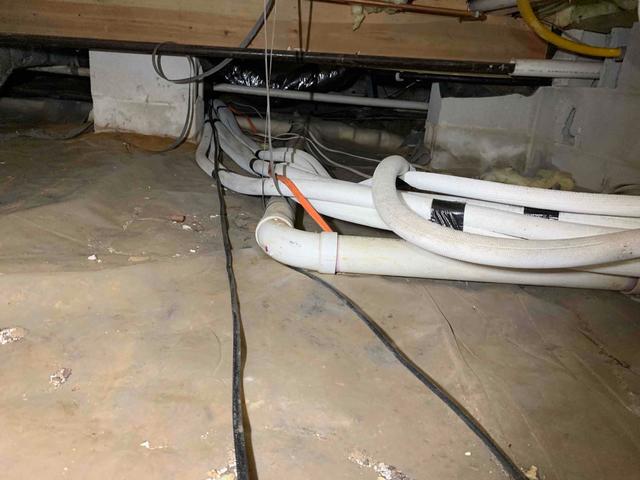
Vapor Barriers
This crawl space has a clear flimsy 10-mil vapor barrier installed over the dirt flooring. These are commonly used in Virginian crawl spaces but are unfortunately not useful in keeping the crawl space dry or protected. Because they are unsealed and easily ripped, moisture rising from the earth becomes trapped in the crawl space, adding to the overall relative humidity. Critters and small creatures find refuge in this dark and damp environment, and termites use the mud and dirt to create tunnels. The piles of debris and puddles formed on top of these liners make going into the crawl space a nightmare for any service person.
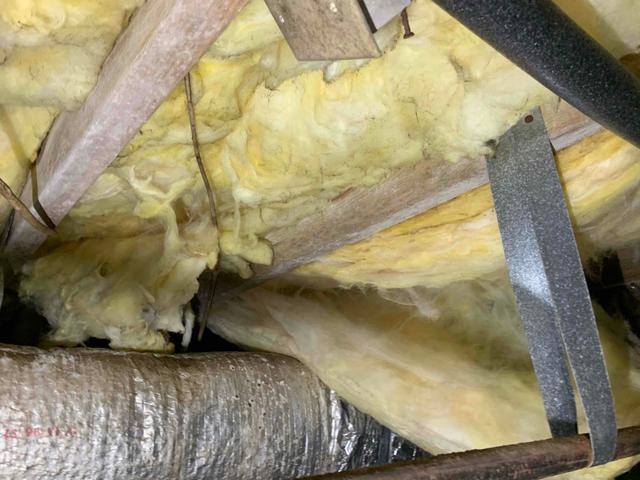
Mold and Mildew Growth
Mold and mildew have begun to grow on the floor joists in this crawl space. Mold growth occurs when the relative humidity in the space is above 60% with warm temperatures. Mold only grows on the organic materials within the crawl space, such as the wood substructure and paper backing of fiberglass insulation. The musty odors that come off the mold spores rise into the home above and affect the homeowners. It can cause irritation to those with allergies and asthma after prolonged exposure.
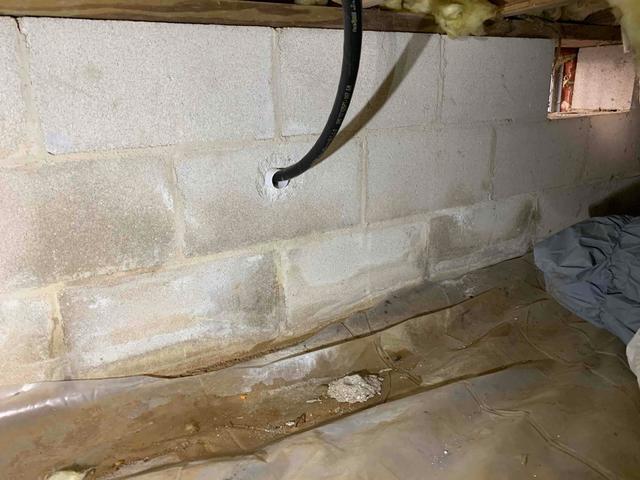
Foundation Walls
Efflorescence is shown on the foundation walls of this crawl space. This occurs when water makes its way through the porous cinderblock walls, pulling the salts and minerals to the surface. The open vents in the foundation wall also allow the outside air and moisture to affect the crawl space, becoming trapped under the home and resulting in condensation, puddling, and high relative humidity. The homeowners will experience cold floors during the winter season, musty odors, and in extreme cases, mold and mildew growth in the home.
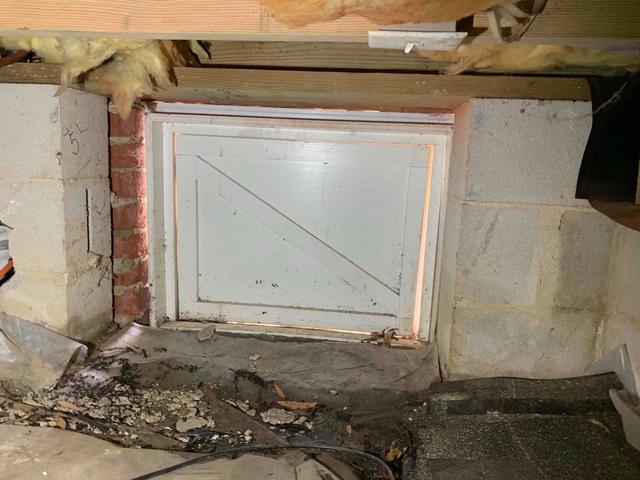
Crawl Space Entrance
This crawl space door is allowing outside air and moisture to leak inside, affecting the air quality, temperature, and relative humidity. These doors are often made of wood or metal and become warped and disfigured from the outside weather over time. The gaps around the door make it easy for pests and critters such as possums, snakes, mice, and bugs to find their way under your home, and even into your home.

